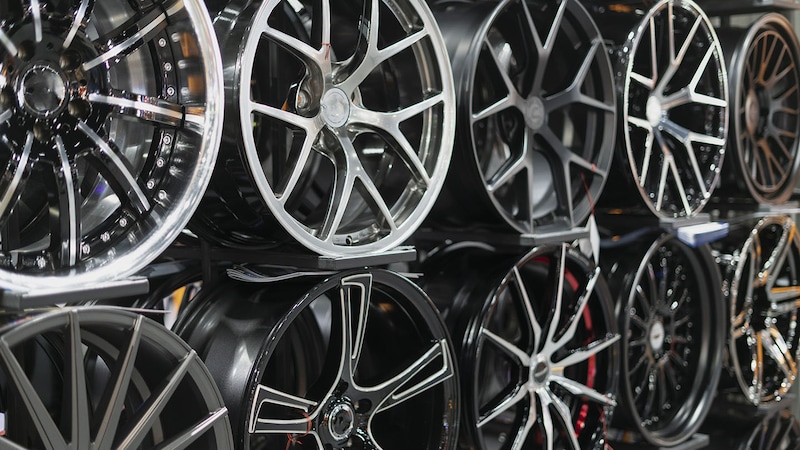Smog tests: What they are and how to prepare for one

Quick insights
- Smog tests are only required in certain states, so it can be helpful to check your state’s regulations to see if your car needs a smog test.
- To help you prepare for a smog test, you will want to make sure your fluid levels are at proper levels, that your engine is warmed up and that the functionality of various systems is working as intended.
- Regular maintenance can help keep your car running smoothly and prevent failed smog tests.
If you live in a state that requires emissions testing, such as a smog test, you may want to buckle up. Smog testing can be an important part of maintaining your vehicle and you may be required to pass it in order to register your vehicle or drive it legally. Let’s learn more about smog testing below.
What is a smog test?
A smog test is a type of emissions test that is done in certain states that checks the amount and what type of pollutant(s) your vehicle emits. You can find out if your state requires this test by checking with your local Department of Motor Vehicles (DMV) website or contacting them directly.
A smog test generally involves the following;
- Check-in and documentation review: When you arrive at a smog test facility, the technician will typically start by reviewing your vehicle’s documentation. This includes registration, proof of insurance and any previous smog test certificates.
- Visual inspection: The technician conducts a visual inspection of the vehicle to ensure that all required emissions control devices are present and appear to be functioning. This includes checking components like the catalytic converter, the fuel cap and other related systems.
- Functional inspection: This step involves checking the functionality of various systems that affect emissions. For example, the technician might look at the check engine light, the ignition timing, the exhaust gas recirculation system and the fuel evaporative system. They may also ensure that the onboard diagnostics (OBD) system is working correctly, as this system monitors the performance of the vehicle’s engine and other systems related to emissions.
- Tailpipe emissions testing: This is the core part of the smog test. The vehicle is placed on a dynamometer, which simulates driving conditions while the car is stationary. The exhaust pipe is connected to an emissions analyzer that measures the concentrations of specific pollutants like carbon monoxide, hydrocarbons and nitrogen oxides being emitted. For newer vehicles, this may be bypassed if the OBD system can provide this data directly.
- Results and certification: After the testing is complete, the results are compiled and compared against state or local emissions standards. If your vehicle passes, you will receive a certificate of compliance, which is often necessary for vehicle registration or renewal. If your vehicle fails, you will receive a report detailing which pollutants were over the limit and possibly what repairs might be necessary to pass a retest.
The entire process usually takes about 20 to 30 minutes, depending on the type of test being conducted and the equipment used. Regular maintenance and addressing any engine warning lights or issues before the test can help ensure your vehicle passes the smog test. Let’s review how in more detail below.
How to prepare for a smog check
Below are some tips to help you prepare and, hopefully, pass a smog test:
- Proactively schedule the test and make sure you arrive early enough to make sure the engine is warmed up and running at full efficiency.
- Before the test, check and maintain proper levels of engine oil, coolant and transmission fluid, all of which may influence test results.
- Make sure that the gas cap is intact and seals properly, as leaks can lead to failures in the evaporative emission control system.
- Get routine check-ups by a mechanic or your dealership that include replacing air filters and inspecting the exhaust system for leaks or damage.
- Remove unnecessary items, as heavy weight can negatively impact your car’s ability to pass the test.
- Get a pre-test inspection by a certified mechanic who can help identify potential issues and fix them prior to the smog test.
Common reasons for failing a smog test
Some common reasons for a failed smog test include:
- Malfunctioning oxygen sensors
- Issues with the evaporative emission control system
- Faulty fuel injectors
- Other minor issues that impact test results, such as improper coolant levels
What to do if you fail a smog test
Failing a smog test doesn’t mean you can never drive your car again—however, you will need to get your car back on track before you can legally drive it. First, you can address the issues from the results and re-test your car after making necessary repairs. You may also discuss the test results with a mechanic who can help give you detailed diagnostics and a repair plan. Finally, make sure you keep all your documentation and receipts related to the repair work and retesting records. After your car has been fixed properly, schedule a re-test and follow the same tips as mentioned earlier.
Conclusion
Smog testing is a helpful way states can monitor the emissions of cars, helping to reduce overall pollutants in the air and create a cleaner environment. If you live in a state where smog tests are required, you may want to make sure your car is set up for success prior to testing—such as performing regular maintenance checks—to help prevent a failed test.



